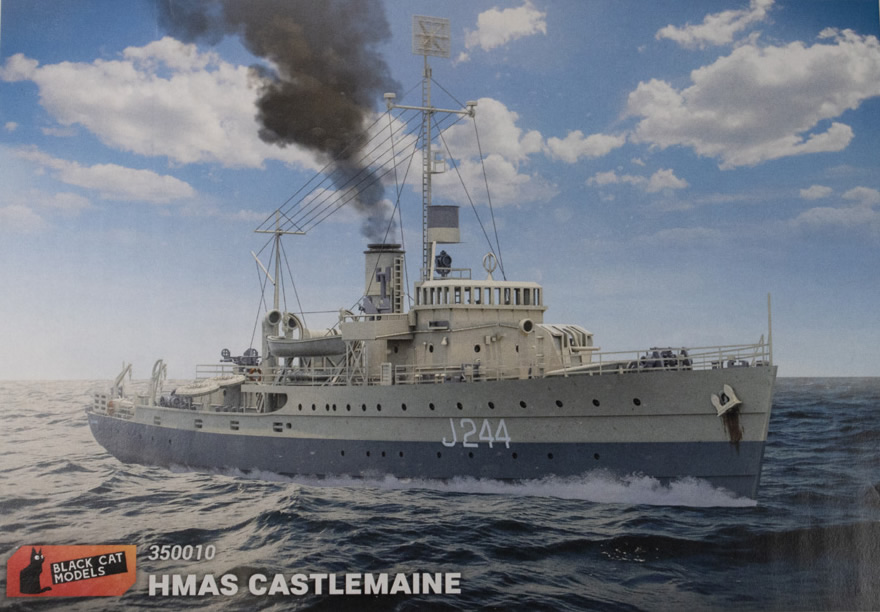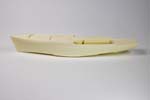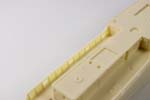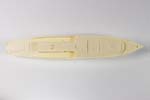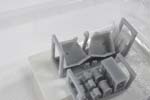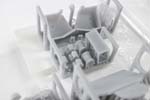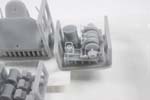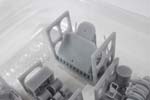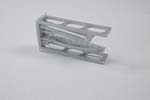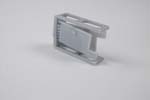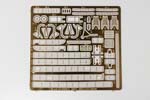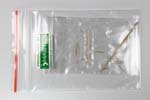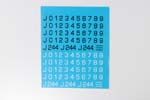HMAS Castlemaine
Bathurst
Class Corvette
Black Cat Models. 1/350th Scale Cast and Print Resin.
Reviewed by Devin Poore, March 2022
A Bathurst class corvette, HMAS Castlemaine,
commissioned into the Royal Australian Navy in June of 1942. The
class of ships were initially envisioned as mine sweepers, yet
modifications during construction and "in the field" during wartime,
allowed the ships to perform most local defense tasks, including
anti-submarine warfare, mine sweeping, air defense, convoy escort, and
even troop transport. Sixty of the vessels were built during the war,
most serving in the Australian and Indian navies.
Shortly after her initial working up, Castlemaine collided with a ferry in Sydney Harbor in early August, 1942. Following minor repairs, November of 1942 saw Castlemaine
participate in Allied guerilla supply operations on the island of
Timor, delivering supplies and troops to the area, and transporting
civilians out of the area. Shortly thereafter, she was assigned to
convoy escort duty, often defending merchant ships from air attack.
Early 1943 saw Castlemaine performing mine sweeping and more
convoy escort duties, initially in local Australian waters, and later
between Queensland and New Guinea.
At war's end, Castlemaine proceeded to Hong Kong to
participate in the Japanese surrender, then remained in the vicinity on
mine sweeping duty. In December of 1945, she placed into reserve and
moored at Crib Point in Victoria, Australia. There she served as a
training and auxiliary ship for the base. In 1973 she was donated to
the Maritime Trust of Australia, where she was restored and converted
into a museum ship in Victoria, where she remains open to the public
to this day.
HMAS Castlemaine in 1941. Photo via Australian Navy website.

Black Cat has included the hull and a few other parts in cast resin. I'm particularly glad to see that the hull has had existing print artifacts removed prior to casting. In line with their previous offerings, the hull has fine detail, thin and straight strakes and other features. Location points for the 3D printed parts are clearly visible. The only clean-up that I can find necessary is on the very bottom, and that being just a faint seam and a little over pour from the molding process. The resin is the old-school style light tan variety, which should take primer and paint well; the only issue with it being that the color is hard to photograph.
The bridge/deckhouse main structure is also supplied in cast resin. Just a basic structure that will be detailed with printed components, the exterior bulkheads are warp-free and nicely thin. My example does have two divots at the base of the structure, fore and aft, but both areas will be covered by deck details. Also cast in resin are the ship's stack and mid-ship skylight/vents, with the same level of detail as the hull and deckhouse. The top of the stack is recessed a bit, but some may wish to use a drill to hollow it out more.
The full size Castlemaine came in at 186 feet, according to the official Australian Navy website. That comes out to 6.38" in 1/350th scale, with my example measuring out at 6.375". Spot-on.

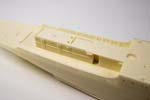
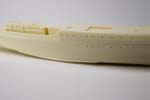
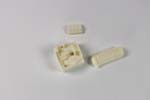
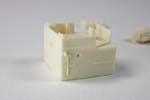




The majority of the kit's parts are 3D printed in resin. As is typical with Black Cat Models, the printing supports are double-sided taped inside plastic clamshell boxes for protection. This makes for an extremely safe packaging option, but it does make it difficult to remove the pieces for photography, so please excuse the "clumped" nature of my photos.
The bitts, chocks, line reels, vents, life rings, anchors and ammunition lockers are all printed parts, as well as the bridge control station and all of the associated pieces. Mast details, radar, prop struts, screws, rudder, and everything else that brings a ship to life are included in the printed parts. The ship's main guns are assembled from multiple pieces, including the choice of an early fit or late fit gun mount, that is then clad with the printed shield, with the early mount having the option of adding a printed blast bag.
The boat handling areas are printed platforms that glue to the hull, overhanging the midship's deck, upon which the handling davits are assembled using either the 3D printed davits, or photo-etched brass. Builder's choice. The more intricate details include the windlass for the anchor, and the mine sweeping equipment. The instructions make a couple of call outs to variations in the parts to be used, Early Fit or Late Fit, for the gun mounts, midships, and the bridge. Also, Bathurst class corvettes fulfilled many roles over their terms of service, from escort to mine sweeping, which may mean that at times certain equipment would be removed or added due to the mission, so check your references for any specifics on era or mission appearance.
Finally, there are many details such as life rings, inclined ladders, 20mm guns, and other parts that Black Cat Models sell as individual detail sets There are extras of each, which should leave a nice addition to the spares box once construction is done.
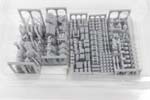
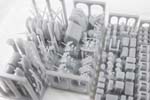
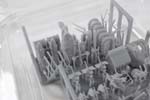
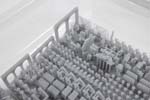


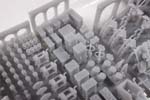
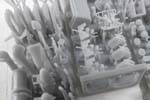
Photo-etched brass supplies the lifelines, rails, ladders, lookout and mast platforms, and other details. The brass is thin, only .007" thick, but it's quite rigid and should stand up well to a bit of bending and handling.
A small bag of turned brass with the Master logo includes two tapered masts, yardarm, prop struts, and flagstaffs. These are extremely nicely done, and at this scale the tapered masts will be a noticeable improvement over simple brass wire.
A small decal sheet includes the Castlemaine's hull number of J244, with additional individual numbers. Those numbers will allow building of other ships of the class, but only the Castlemaine's name is included. Noticeably missing from the decals are any flags.
The instructions are full-color, booklet style, of 16 pages. A short history of the ship and a part inventory make up the first few pages of the booklet, which is followed by step-by-step illustrations of assembly. These are easily readable and color-coded to the material of the part (resin, printed, brass). The last two pages have two perspective renderings of the ship, and a five-view plan and profile. One should be able to glean enough information from the profiles to correctly rig the ship. No paint brands are mentioned in the color call outs, but the Admiralty paint numbers are given.
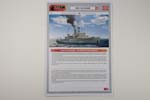
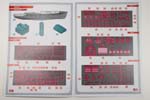
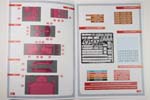
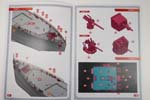
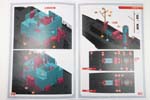
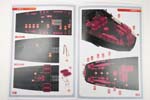
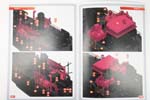
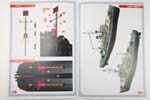
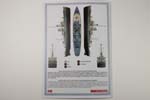
Another beautiful offering from Black Cat Models. I've always wanted to see more "small boys" in 1/350th scale, and this approach of cast resin hull with 3D printed accessories is the perfect way to showcase these small warships. Resin kits sometimes have a bad reputation due to perceived difficulty of the materials, but this should be a good entry point for a first time builder. Removing the small details from the printing supports will be the most tricky aspect of the project, but care and a nice pair of sprue cutters should make painless. The concise and clear, color-coded instructions should make for an uneventful build.
Highly recommended. Thank you to Black Cat Models for the review sample. You can purchase this kit and their other offerings directly from their website.
